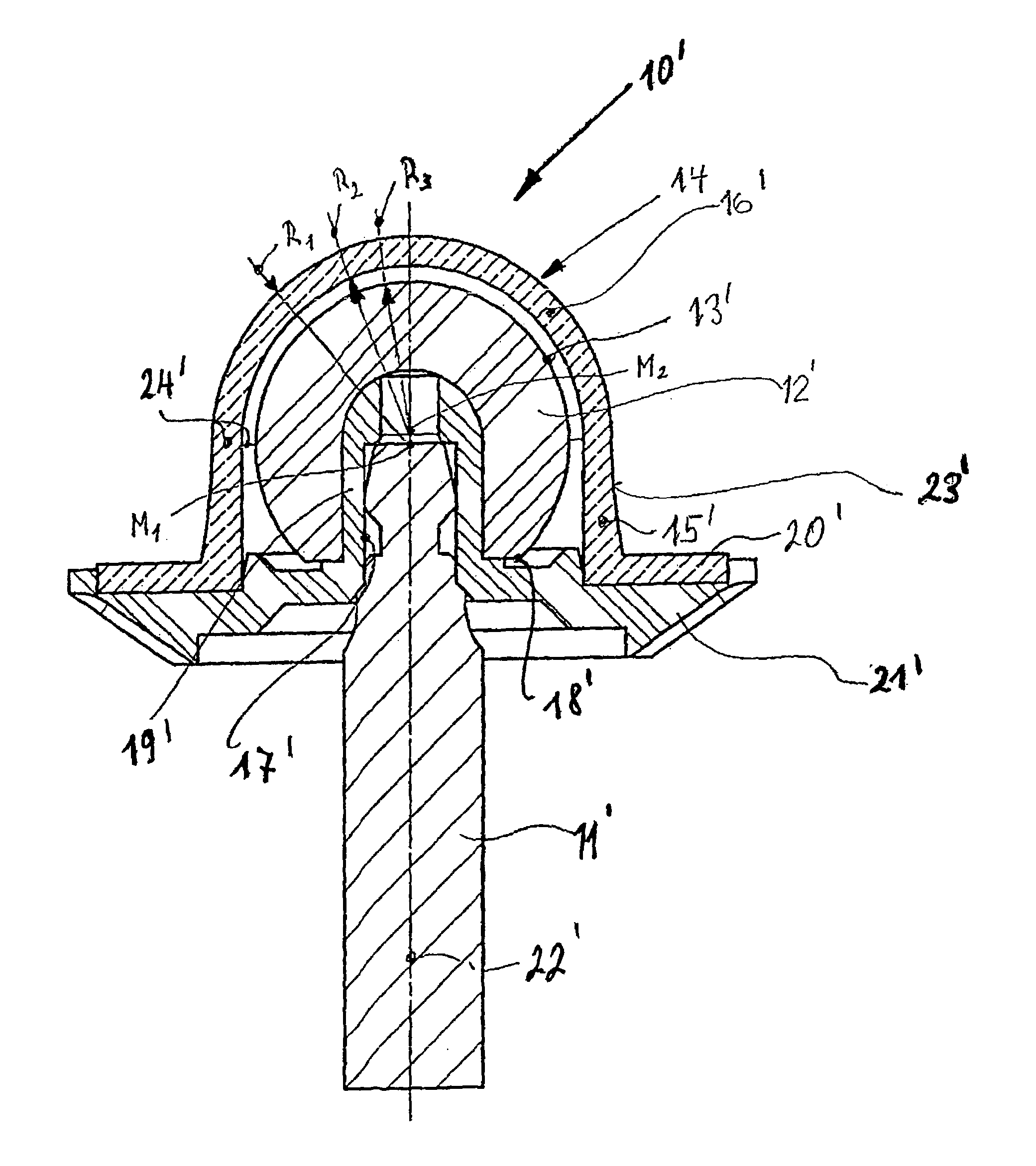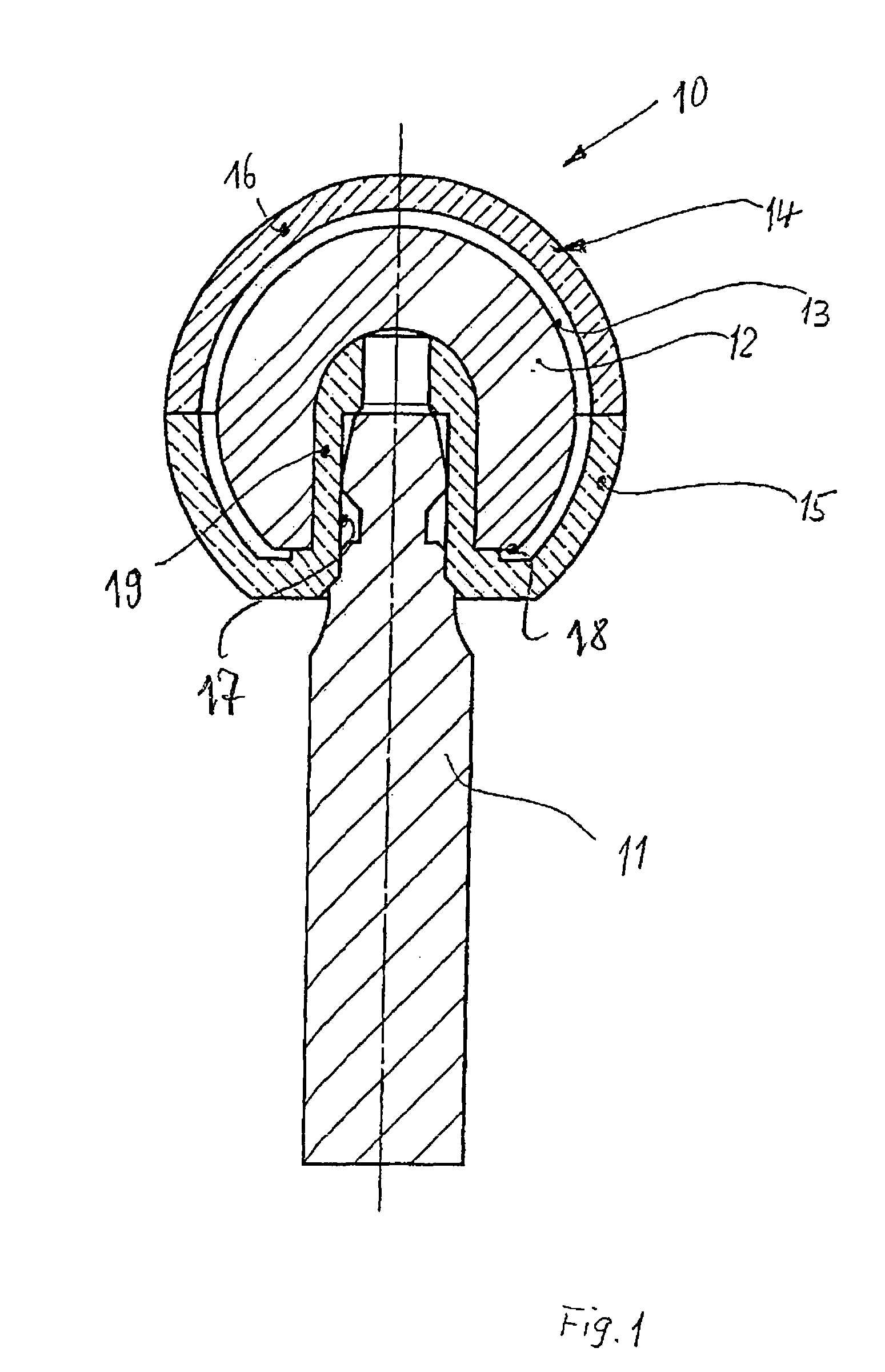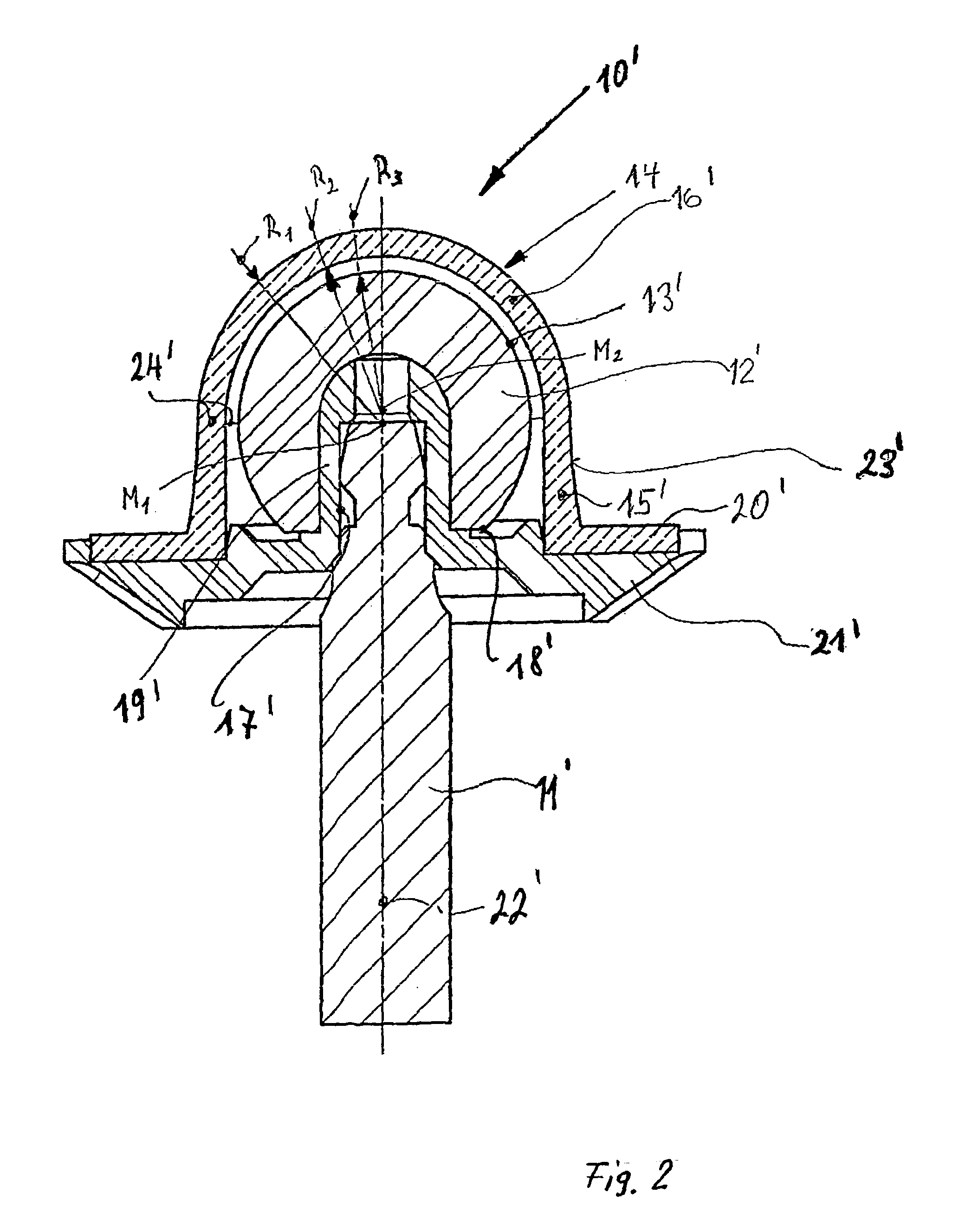Marker for a navigation system
- Summary
- Abstract
- Description
- Claims
- Application Information
AI Technical Summary
Benefits of technology
Problems solved by technology
Method used
Image
Examples
Embodiment Construction
FIG. 1 shows, in longitudinal section and to an enlarged scale, a marker 10 for a navigation system for determining the position in space, of, for example, a surgical instrument. This marker 10 comprises a sphere 12 having a retroreflecting surface 13, which in known manner includes very fine glass spherules having a diameter from 20μ to a maximum of about 200μ. The retroreflecting surface 13 is protected by a dimensionally stable, light-permeable or transparent (i.e., translucent) shell 14, preferably made of transparent plastics material, more specifically in such a manner that the reflected image remains substantially uninfluenced in respect of contour and barycentre location. As mentioned hereinbefore, imaging of the retroreflecting sphere surface by a camera associated with the system ideally is circular. As a result of the fact that the shell 14 concentrically surrounds the retroreflecting sphere surface 13 at a small spacing and also that the wall thickness of the shell 14 is...
PUM
 Login to View More
Login to View More Abstract
Description
Claims
Application Information
 Login to View More
Login to View More - R&D
- Intellectual Property
- Life Sciences
- Materials
- Tech Scout
- Unparalleled Data Quality
- Higher Quality Content
- 60% Fewer Hallucinations
Browse by: Latest US Patents, China's latest patents, Technical Efficacy Thesaurus, Application Domain, Technology Topic, Popular Technical Reports.
© 2025 PatSnap. All rights reserved.Legal|Privacy policy|Modern Slavery Act Transparency Statement|Sitemap|About US| Contact US: help@patsnap.com



